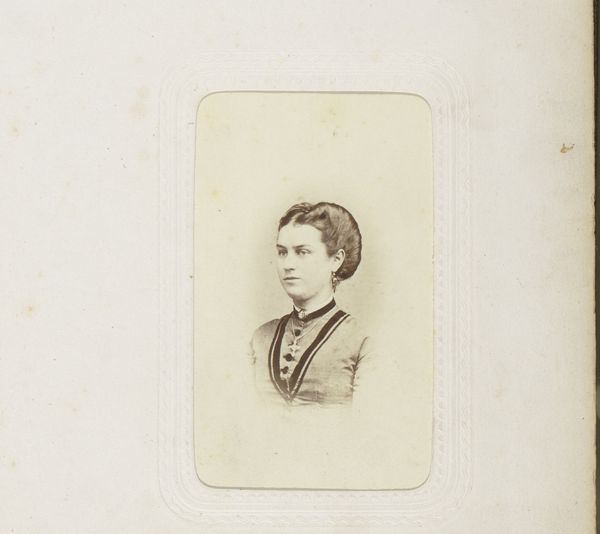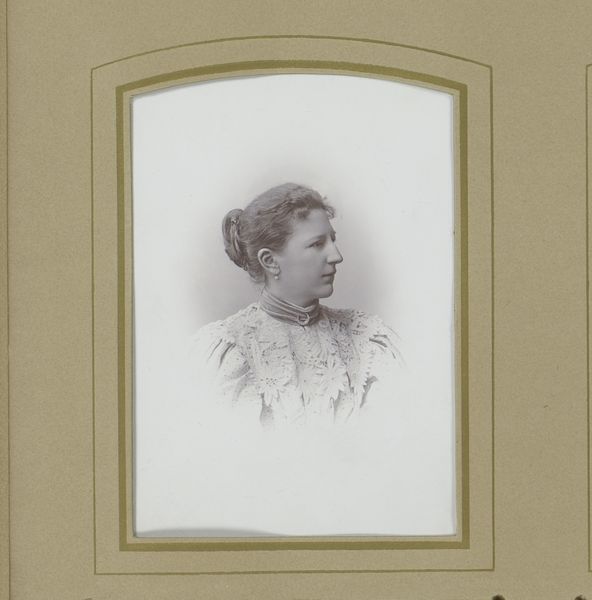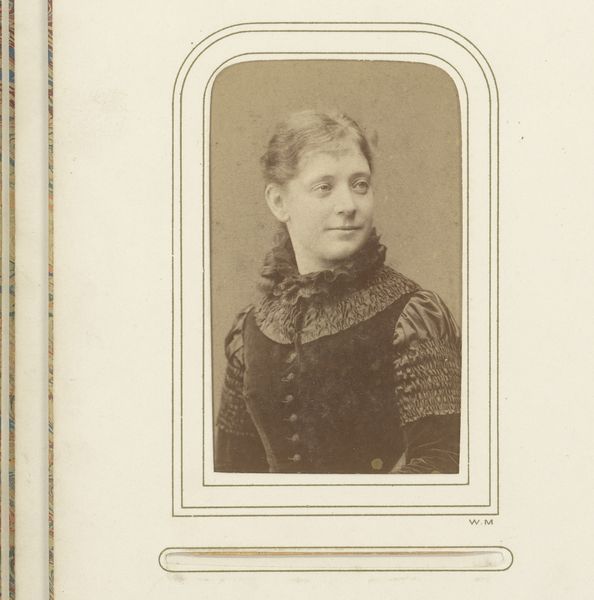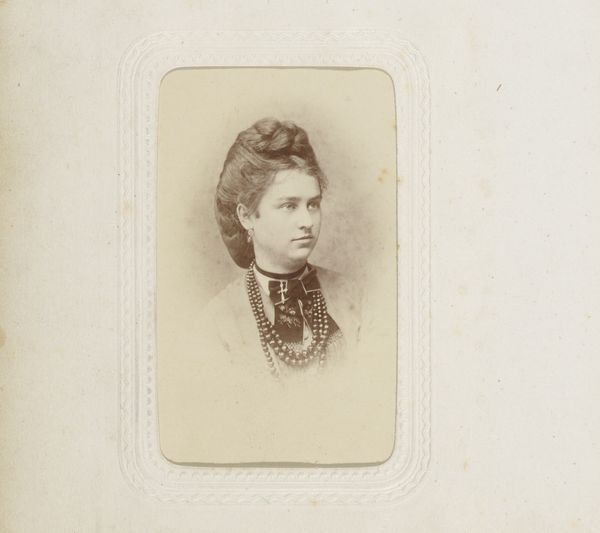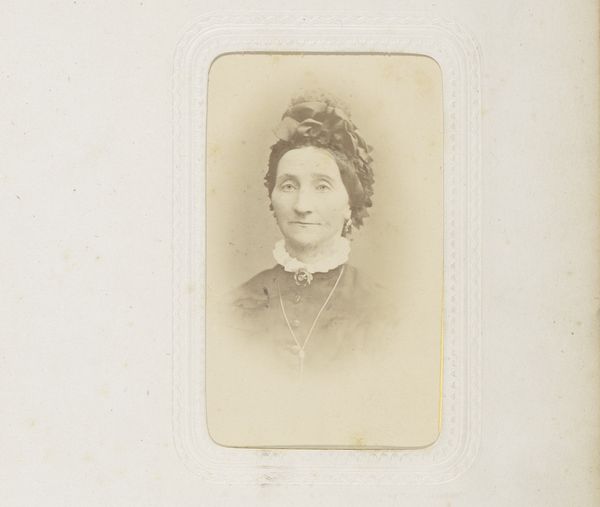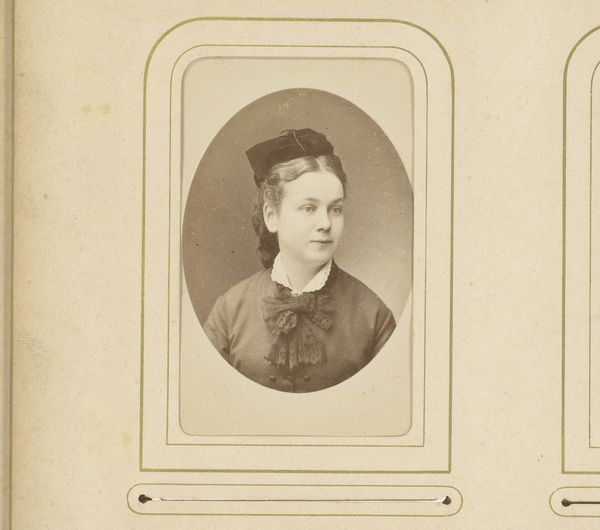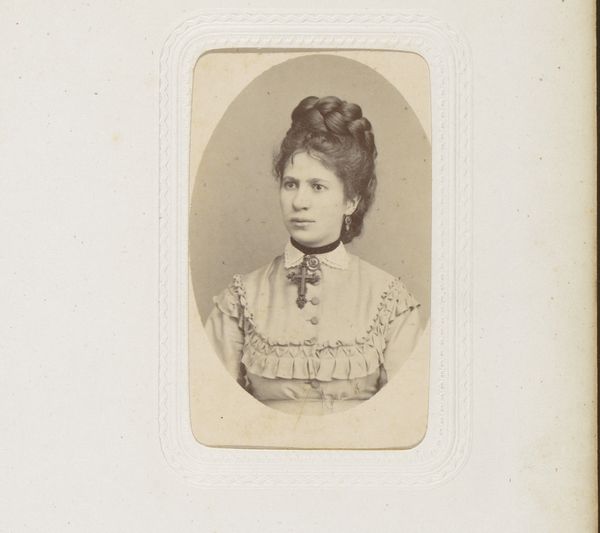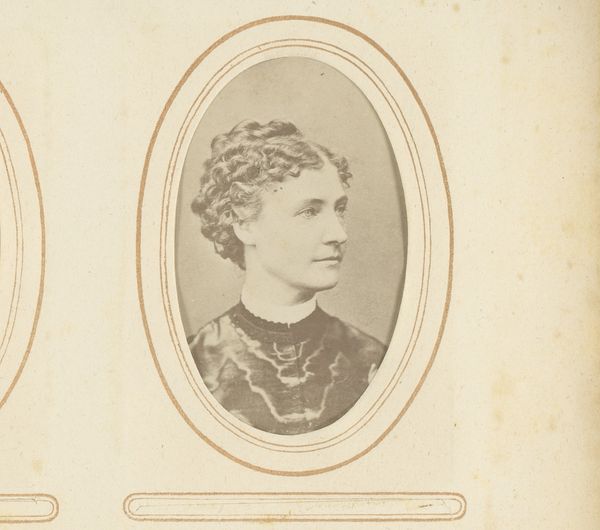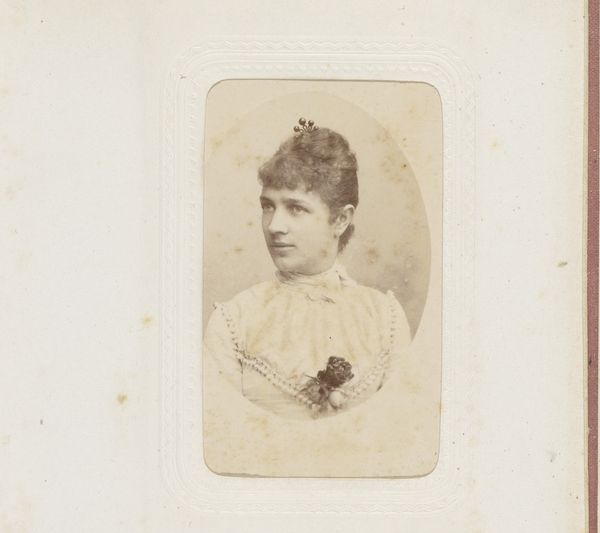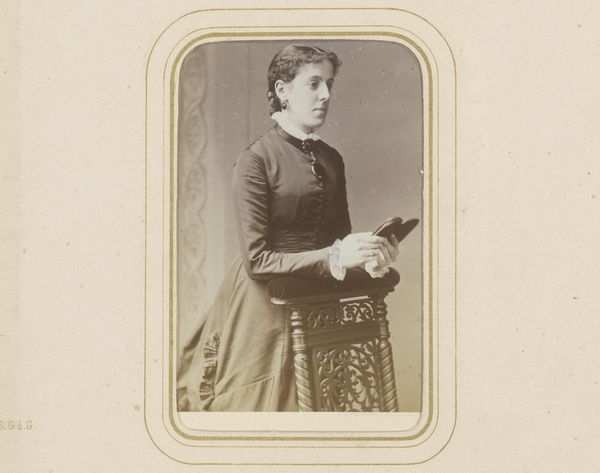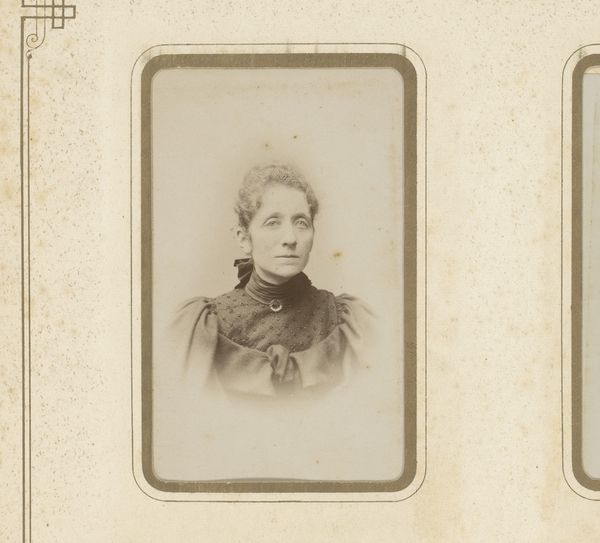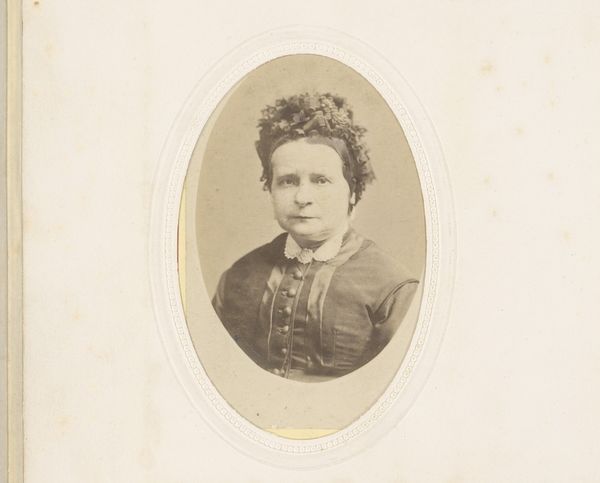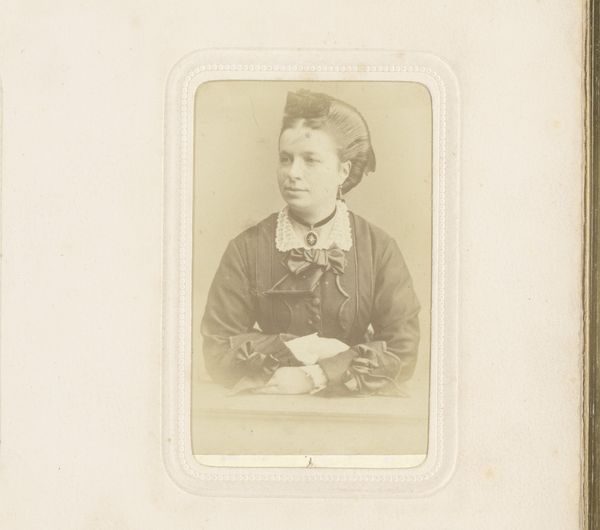
photography
#
portrait
#
16_19th-century
#
photography
#
19th century
Dimensions: height 84 mm, width 51 mm
Copyright: Rijks Museum: Open Domain
Curator: Welcome. Here in gallery 220, we have a photographic "Portret van een vrouw", attributed to Wegner & Mottu, circa 1870-1890. It’s part of the Rijksmuseum’s collection. Editor: There’s a melancholy elegance here. The subdued sepia tones and the subject’s averted gaze create a mood of quiet introspection. It's very romantic, in a mournful way. Curator: It’s interesting how these photographic portraits functioned for the rising middle class. They weren't royalty, but photography offered a means to craft a visual representation of themselves, their aspirations. This woman is clearly concerned with projecting respectability. The cross around her neck hints at pious, deeply personal identity. Editor: That cross is quite striking. You see these accouterments often in portraiture of the era –the subject telegraphing virtue through adornment, no less so given her relative youth, perhaps barely post-adolescent. The pearls, the ornate trimming of her dress, all speak to societal expectations, perhaps pressure. Do you think she chose those symbols, or were they thrust upon her? Curator: That’s the crux of the matter, isn't it? To what extent can any individual, let alone a woman in the late 19th century, truly perform themselves outside societal constraint? Consider her positioning; her posture is erect but rigid; it conveys a desire for individuality stifled by a sort of bourgeois uniformity. Editor: The formality reminds me of painted portraiture, which photography at this time was still in conversation with. But unlike paintings, there’s an assumed indexicality with the medium itself; that here, we’re actually beholding her. It's also telling to observe this within a broader history of photography – the power it gradually unlocked for women both behind the lens and in front of it, as they navigated changing gender dynamics and the fight for individual agency. Curator: Yes. Thinking about those narratives, the image serves as a powerful artifact. And like every good artwork, it generates further questions even as it preserves a record. Editor: Absolutely. There's something incredibly human and enduring captured in that simple portrait.
Comments
No comments
Be the first to comment and join the conversation on the ultimate creative platform.

